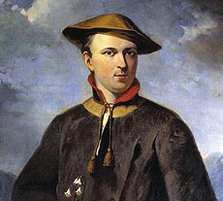
o
commemorate the 300th anniversary of the birth of Swedish botanist Carl
Linnaeus, Uppsala University hosted an international conference under
the title “Linnaeus and Homo

Religiosus—Historical and Contemporary Perspectives
on the Biological Roots of Religious Awareness and Human Identity,” held
from May 30 to June 1, 2007 in Uppsala, Sweden.

The focus of the conference was on three themes: historical perspectives
on Linnaeus and Homo Religiosus; evolutionary, neuroscientific and theological
accounts of religious awareness and identity; and theories of human nature
and purpose after Darwin. Dr. Mikael Stenmark, professor of philosophy
at Uppsala University, was in charge of the event.

How does he define the term “Homo Religiosus”? “The naturalness of religious
awareness was taken for granted by Linnaeus and questioned by others
during the Enlightenment,” says Stenmark, “but scholars have nevertheless
coined the term Homo religiosus referring specifically to religious awareness
as one constitutive aspect of humanity distinct from others.”

There were 58 scholars participating in the conference, with six keynote
speakers in addition to Stenmark: Gunnar Broberg, Simon Conway Morris,
Niels Henrik Gregersen, John Haught, Peter Harrison, and Celia Deane-Drummond.
Some ideas were proposed about how theories in cognitive science, especially
in evolutionary psychology, might be used to understand the “naturalness”
of belief in God.

Theories of human nature and purpose post-Darwin were also aired. “Some
of the discussion was concerned with how to relate a Darwinian theory
of human nature to, on the one hand, a social constructivist theory of
human nature and, on the other hand, a Christian understanding of it,”
says Stenmark. “One conclusion was that more attention in the science-religion
dialogue needs to be attached to the fact that the scientific community
is divided on the issue of how to understand humanity.”

An enduring outcome of the conference will be a new website on science
and religion in Swedish, with scholars in Nordic countries being invited
to join this network. The Sigtuna Foundation, one of the key centers
for promotion of spiritual values in Sweden, will also be involved and
the website was anticipated to go online shortly after the Sigtuna conference.

But the focal theme of the Linnaeus conference was the great botanist
himself. After 300 years, what assessment can be made of the significance
of his work? “His greatest scientific contribution was of course his
system of biological classification,” declares Stenmark. “When it comes
to science and religion, he treated these as complementary and wanted
to integrate them to obtain a ‘whole’ worldview. His approach was in
this sense ‘holistic’ rather than ‘atomistic’.”

What is the biggest question with regard to Linnaeus, science, and religion?
“For Linnaeus, an integration of science and religion was almost self-evident.
However, the way in which Linnaeus integrated science and religion is
not possible in a post-Darwinian world. The challenge today is to develop
a different model of integration which at the same time respects the
autonomy and distinctiveness of each of these two human activities.”



 o
commemorate the 300th anniversary of the birth of Swedish botanist Carl
Linnaeus, Uppsala University hosted an international conference under
the title “Linnaeus and Homo
o
commemorate the 300th anniversary of the birth of Swedish botanist Carl
Linnaeus, Uppsala University hosted an international conference under
the title “Linnaeus and Homo  Religiosus—Historical and Contemporary Perspectives
on the Biological Roots of Religious Awareness and Human Identity,” held
from May 30 to June 1, 2007 in Uppsala, Sweden.
Religiosus—Historical and Contemporary Perspectives
on the Biological Roots of Religious Awareness and Human Identity,” held
from May 30 to June 1, 2007 in Uppsala, Sweden.